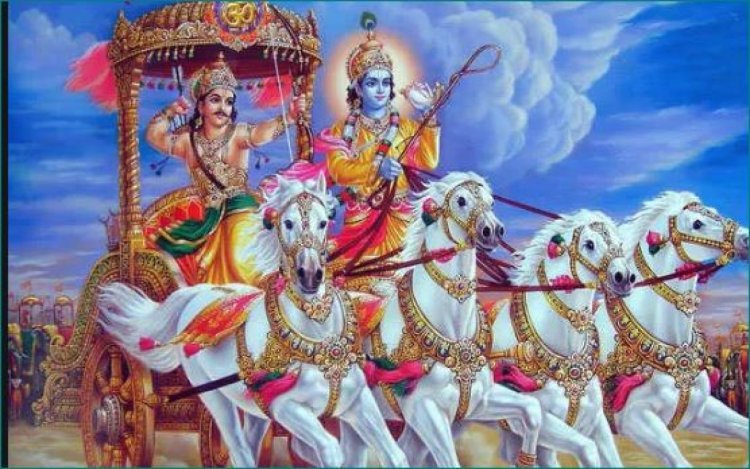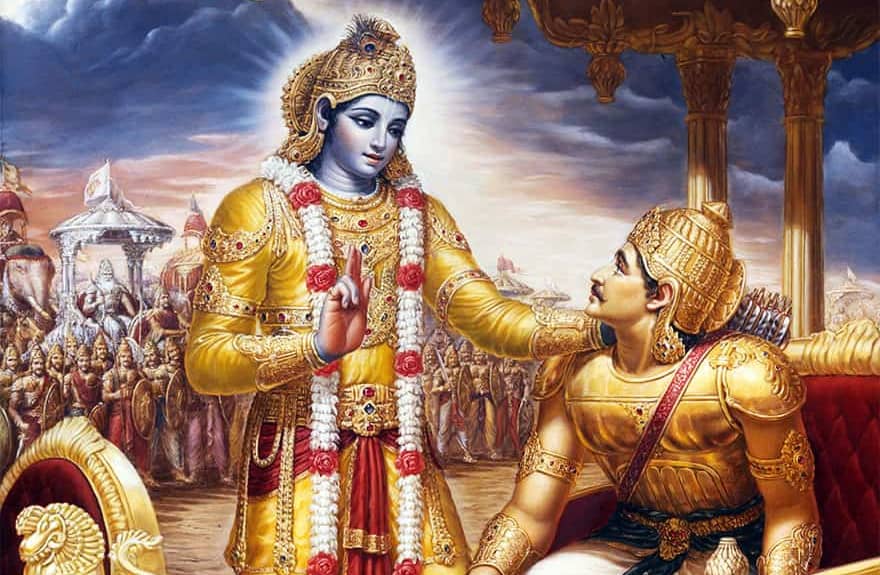18 styles of yoga according to Bhagavad Gita
The ancient scripture of Hindus – Srimad Bhagavad Gita is a treasure for ‘yoga’ lovers.

18 styles of yoga according to Bhagavad Gita
The practise of yoga, which dates back thousands of years, remains popular today. Asanas (postures) and pranayama (breathing methods) make up yoga, a form of meditation that has been shown to have positive effects on our mental health, physical health, and emotional health. Yoga's calming effects help us maintain a more positive and upbeat demeanour throughout the day.
Srimad Bhagavad Gita, the sacred Hindu text, is a gold mine for yogis. There are 700'shlokas' spread across 18 chapters that discuss the nonattached lifestyle; 3 of these chapters provide an excellent explanation of the various forms of yoga. Bhagavad Gita identifies the following as the 18 Yoga Traditions.

1 . Visada yoga
Yoga as a spiritual rule set that lifts us up from the ground we're standing on, separating us from the chaos of this world, is also known as the Yoga of the Dejection of the Spirit. When Arjuna was at his wits' end about his responsibilities and feeling down in the dumps, Krishna encouraged him to give this technique a shot. This is why Detection of the Spirit Yoga has earned its name.
2. Sankhya yoga
A branch of yoga known as Sankhya places a focus on empirical or numerical exercise. There is no room for production or destruction outside of the transition from tacit to explicit knowledge. The philosophical and intellectual communities have embraced this form of yoga.
3 . Karma yoga

Karma yoga, Lord Krishna taught Arjuna, is the greatest form of yoga since it benefits everyone. It's a road map to doing what we know is right. Karma yoga emphasises doing good deeds for the benefit of others and oneself.
4. Jnana yoga

Karma yoga, Lord Krishna taught Arjuna, is the greatest form of yoga since it benefits everyone. It's a road map to doing what we know is right. Karma yoga emphasises doing good deeds for the benefit of others and oneself.
5. Karma Vairagya Yoga
Doing good deeds for the sake of others is a spiritual discipline. The renunciation of activity, or karma vairagya yoga (karma- sannyasa), is a spiritual path. Yoga's teachings on action, inaction, and service to the Supreme are all laid forth here.
6. Abhyasa yoga
Self-realization and self-discipline are the goals of the next yoga tradition mentioned in the Bhagavad Gita. It is a method used by wise men and women to develop self-control and find inner peace. This form of yoga cultivates personal strength and helps one grow spiritually, mentally, and physically.
7. Paramahamsa Vijnana yoga
This yoga tradition gives a comprehensive account of the essence of Krishna consciousness.
The route to wisdom enlightenment as described by Paramahamsa Vijnana yoga.
8. Aksara-Parabrahman yoga
It leads to the Eternal Brahman. This branch of yoga explains how to maintain your link to the Supreme Power and how to gain strength via yoga practise, all while describing the nature of material activity.
9. Raja-Vidya-Guhya yoga
It leads to the Eternal Brahman. This branch of yoga explains how to maintain your link to the Supreme Power and how to gain strength via yoga practise, all while describing the nature of material activity.
10. Vibhuti-Vistara-Yoga
This is the way that Opulence reveals itself to the world. This yoga explains how to recognise God as the ultimate cause of everything, in addition to discussing the magnificence of the Supreme across the cosmos.
11. Visvarupa-Darsana yoga
In yoga's eleventh chapter, God is said to be everywhere.
12. Bhakti yoga

Bhakti Yoga is a Hindu spiritual discipline that emphasises devoted, selfless service to a deity of one's choosing. The goal of this yoga practise is to foster feelings of boundless compassion.
13. Ksetra- Ksetranja Vibhaga yoga
This yoga shows us, through his three energies, how to connect with the Supreme Being. The body, or kshetra, is material and subject to change, but the knower, or Ksetranja, is immutable and self-aware.
14. Gunatraya-Vibhaga yoga
Krishna describes kindness, passion, and ignorance as the three Gunas of material nature in the 14th chapter of the Bhagavad Gita. Anger, fear, sloth, etc. fall under the category of "ignorance," while "control," "anxiety," "attachment," and "aversion" belong to the "passion" category.
15. Purusottama yoga
The eternal and transcendent nature of God is discussed in Chapter Fifteen of the Bhagavad Gita. Krishna explains that the goal of this yoga practise and the Transcendental knowledge of God is to free ourselves from the shackles of the material world.
16. Daivasura-Sampada-Vibhaga yoga
This is the way of demonic and divine qualities. Humans can have either a divine or demonic essence, as described in detail in the sixteenth chapter of the Bhagavad Gita. Those who associate with the modes of passion and ignorance because they have demonic traits are not guided by the rules of the scriptures and hold materialistic worldviews.
17. Sraddhatraya-Vibhaga yoga
The Sraddhatraya-Vibhaga yoga represents the three major religious traditions. In this yoga, topics like altruism and self-denial are discussed. Lord Krishna discusses the role of faith in shaping the personality and longevity of living things.
18. Moksa-Opadesa yoga
The final chapter of the Bhagavad Gita summarises the teachings of the preceding chapters on how to achieve salvation through karma. Advice is the way to freedom.












